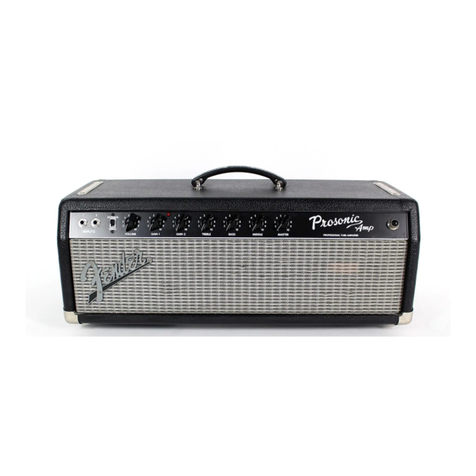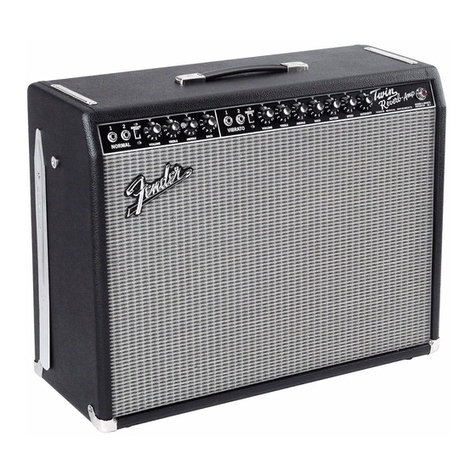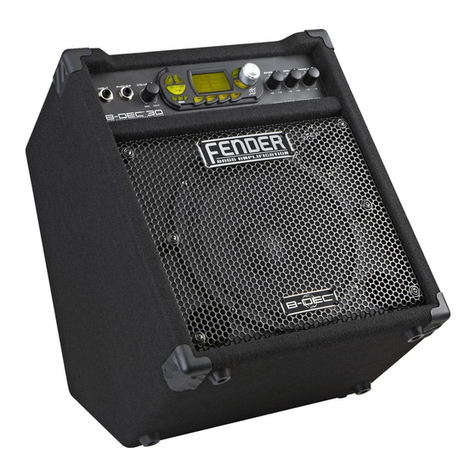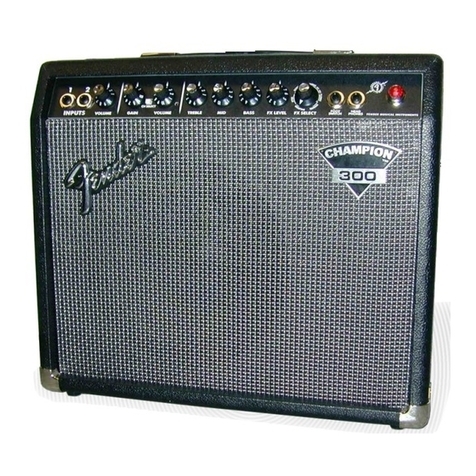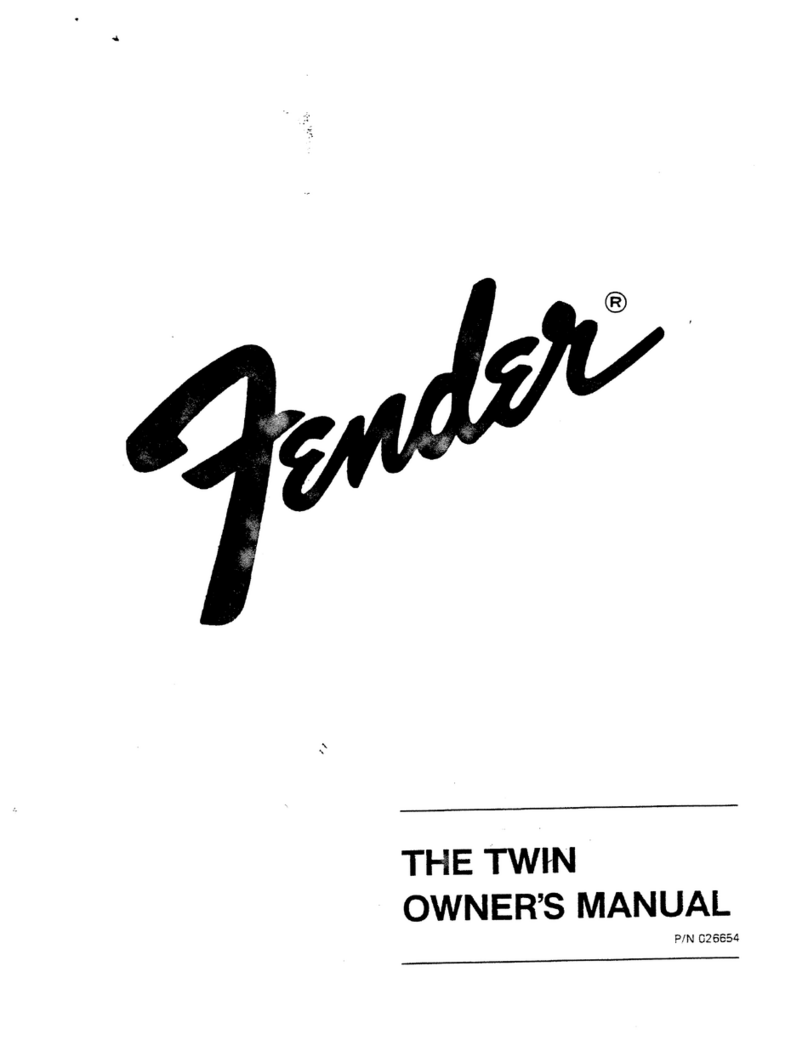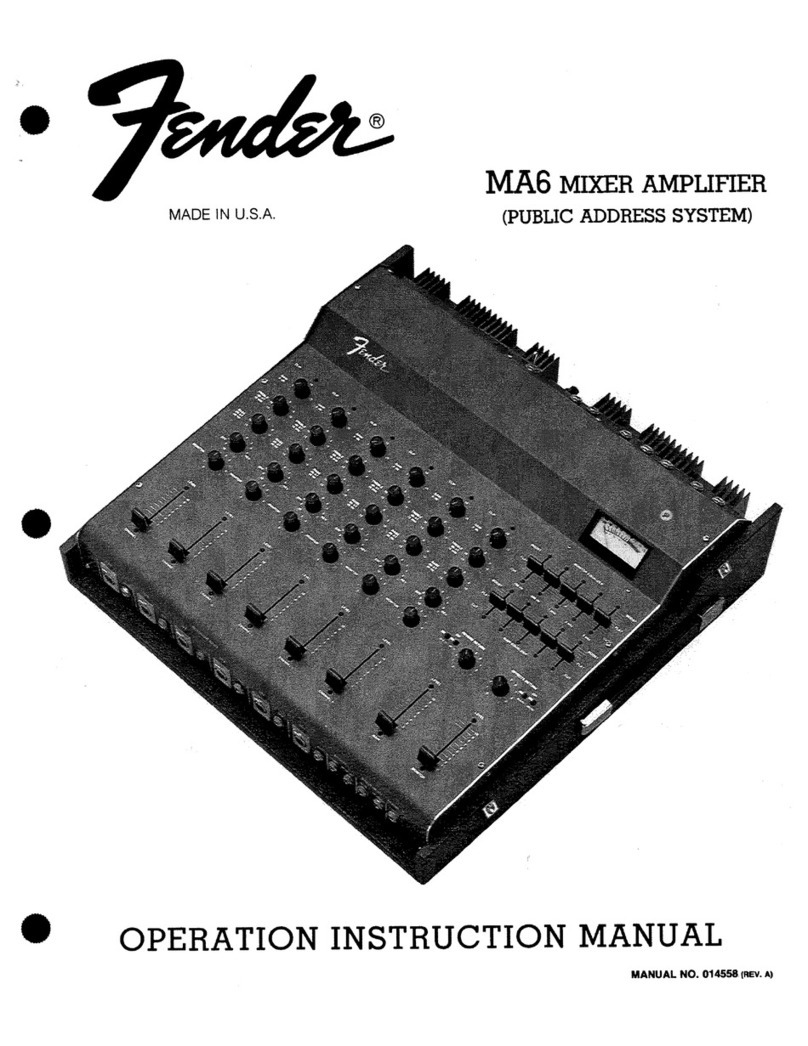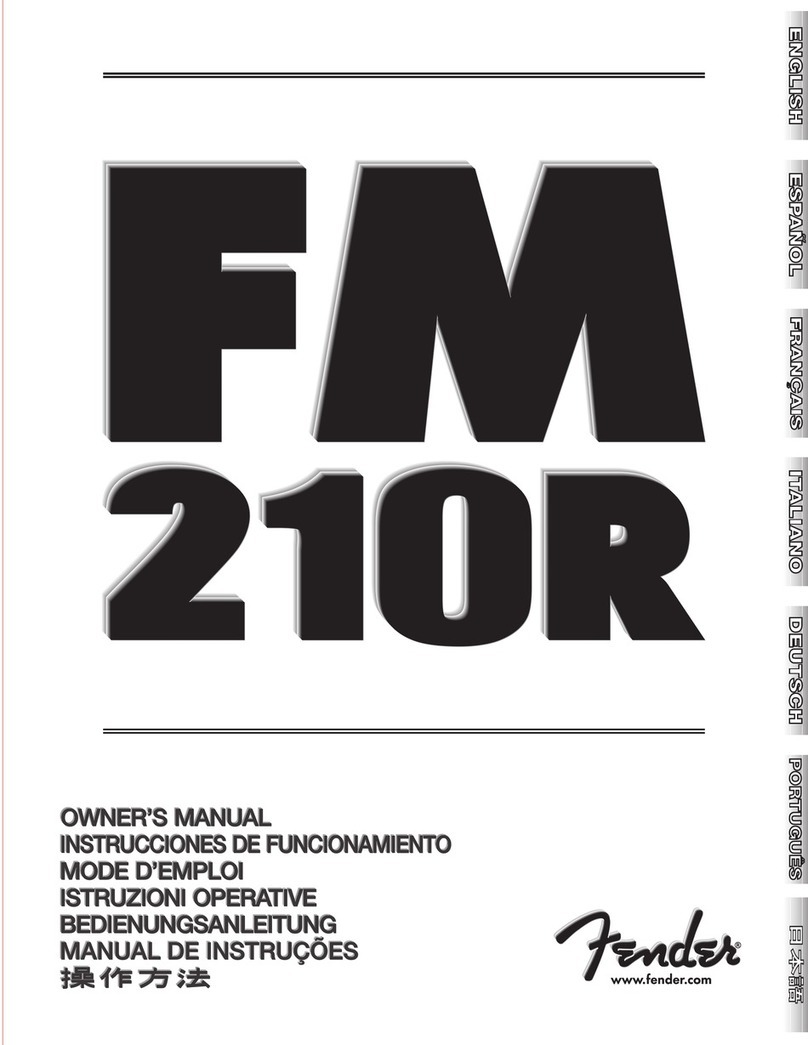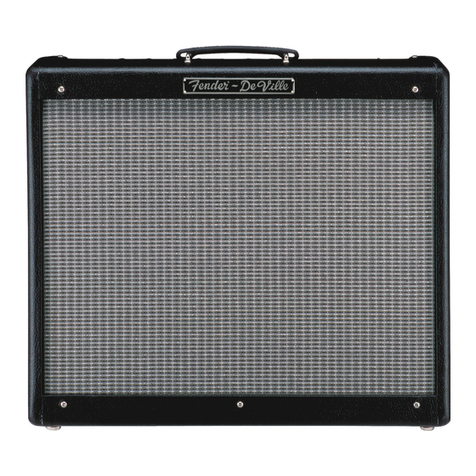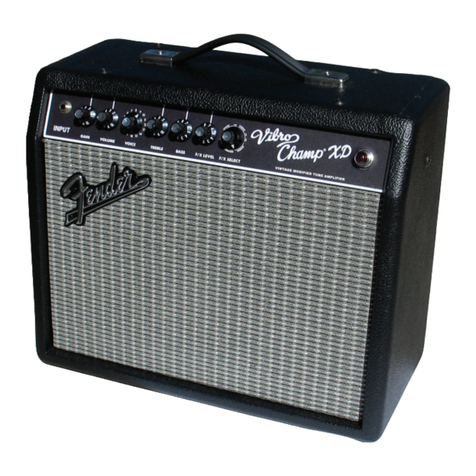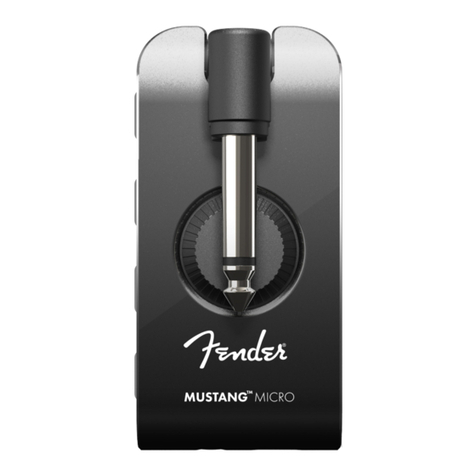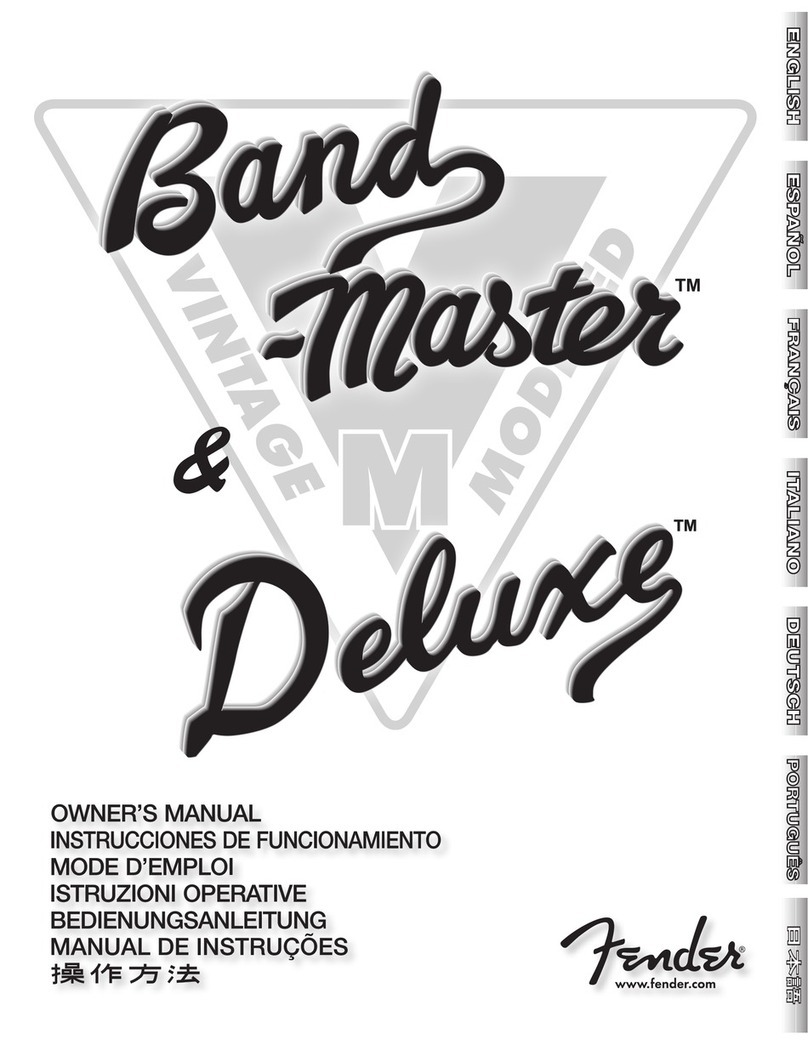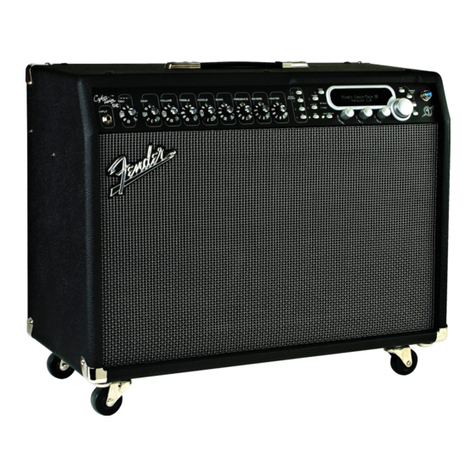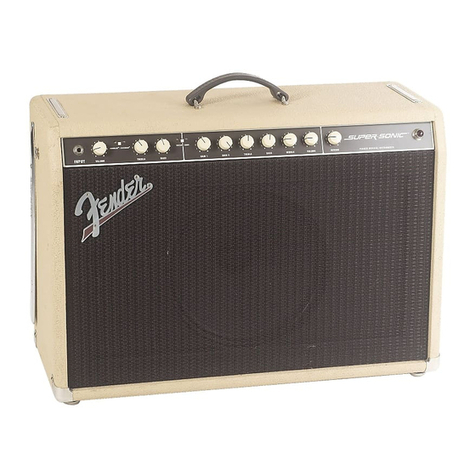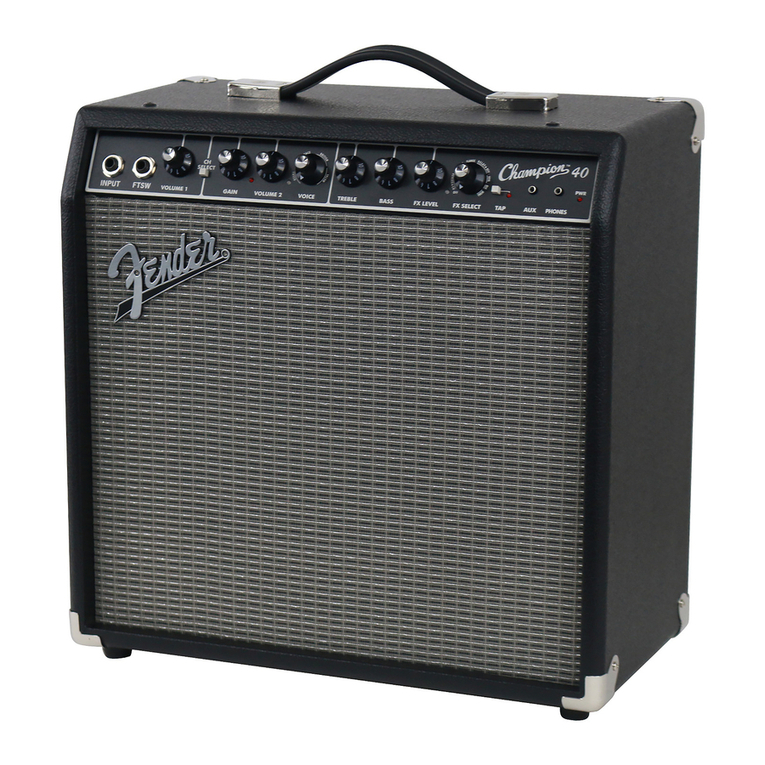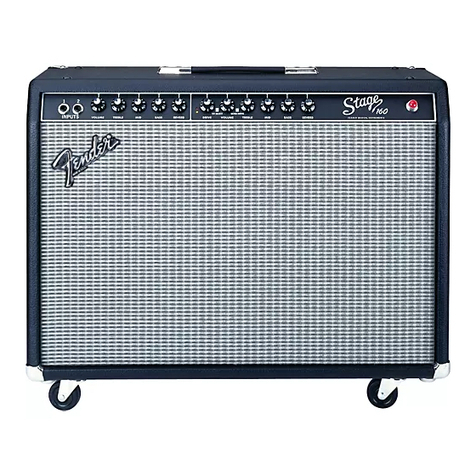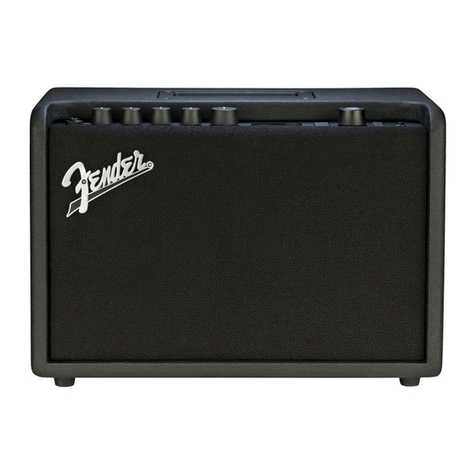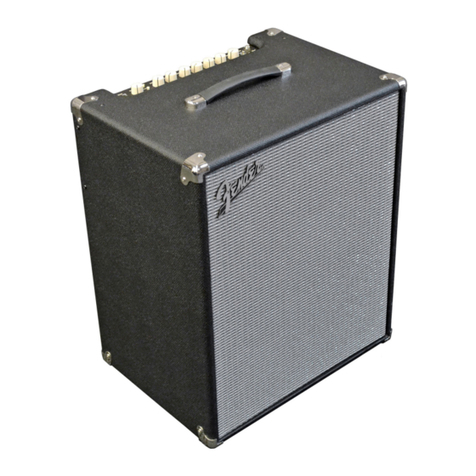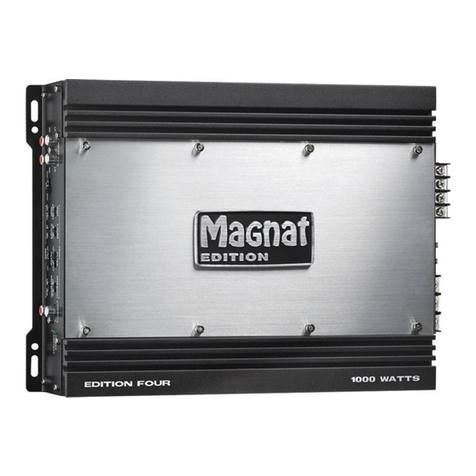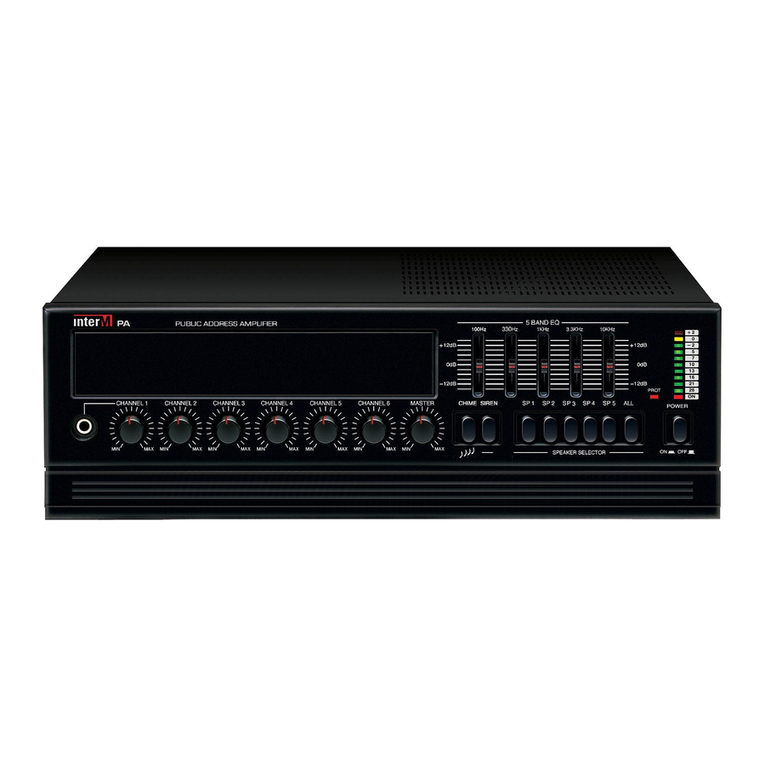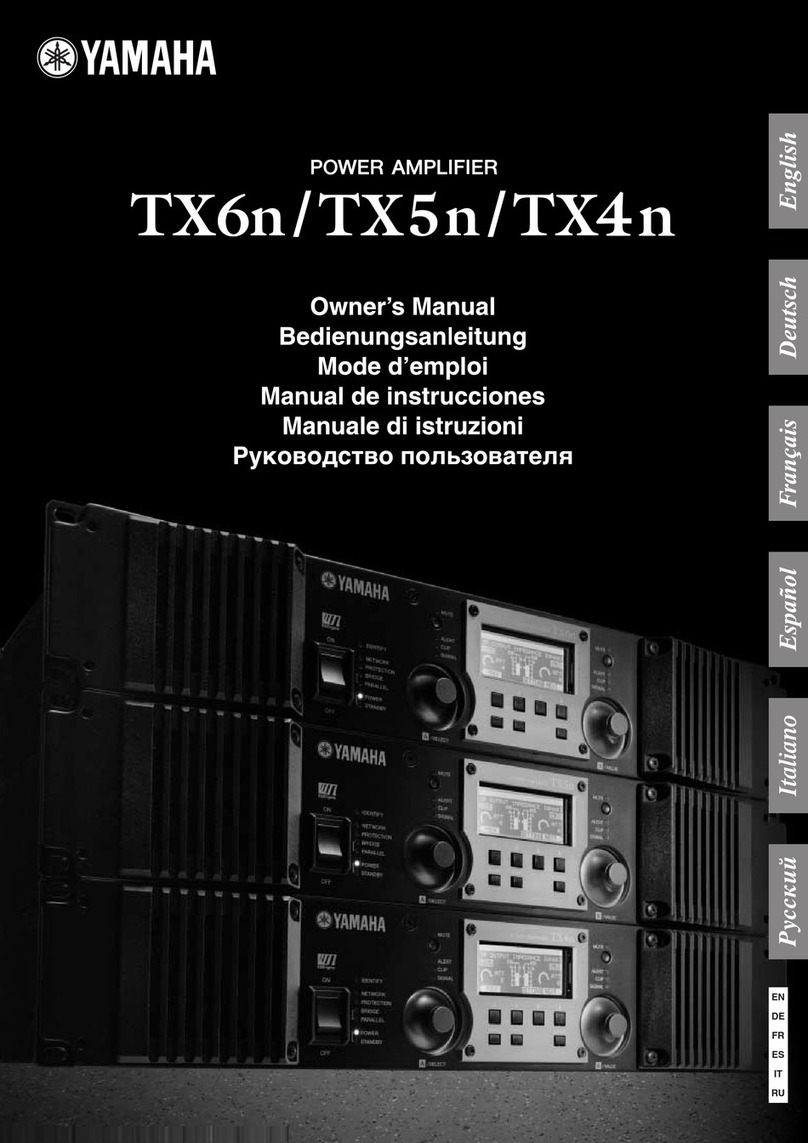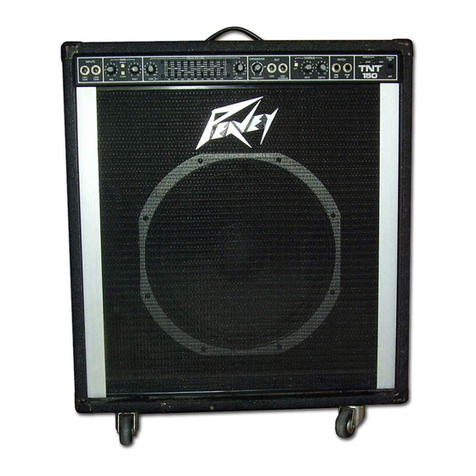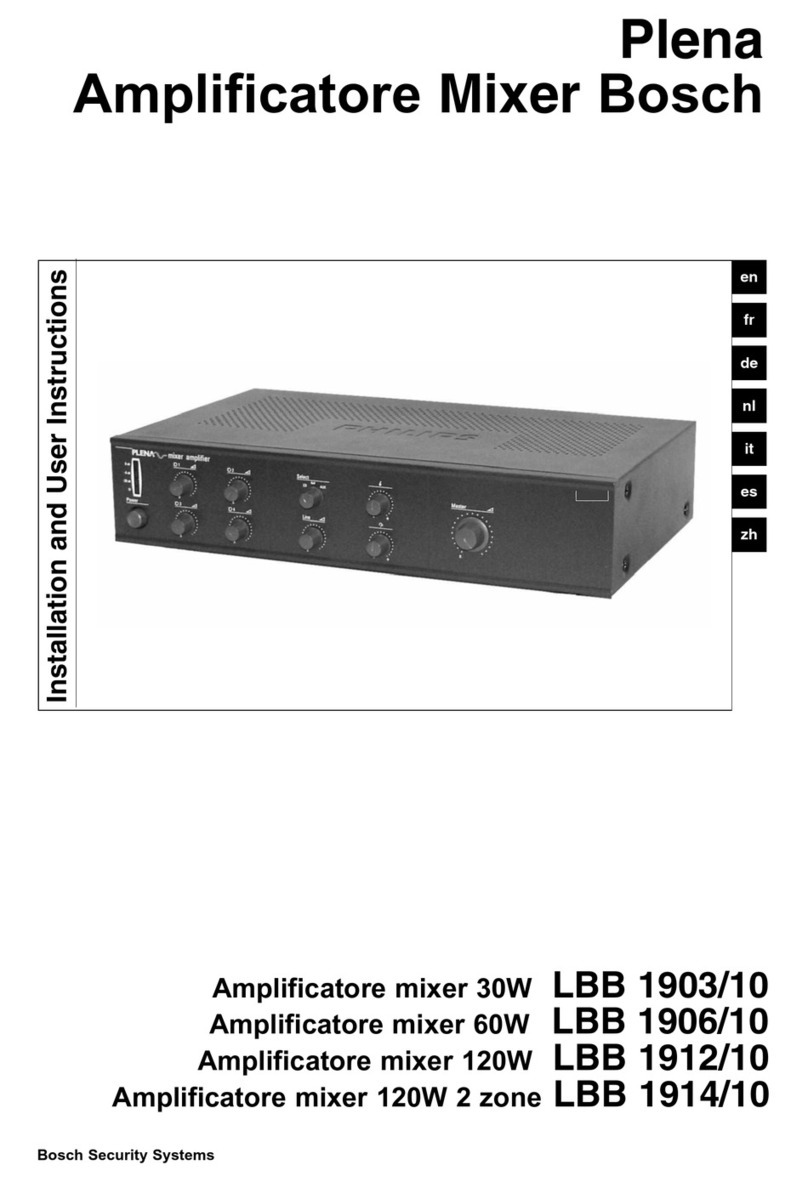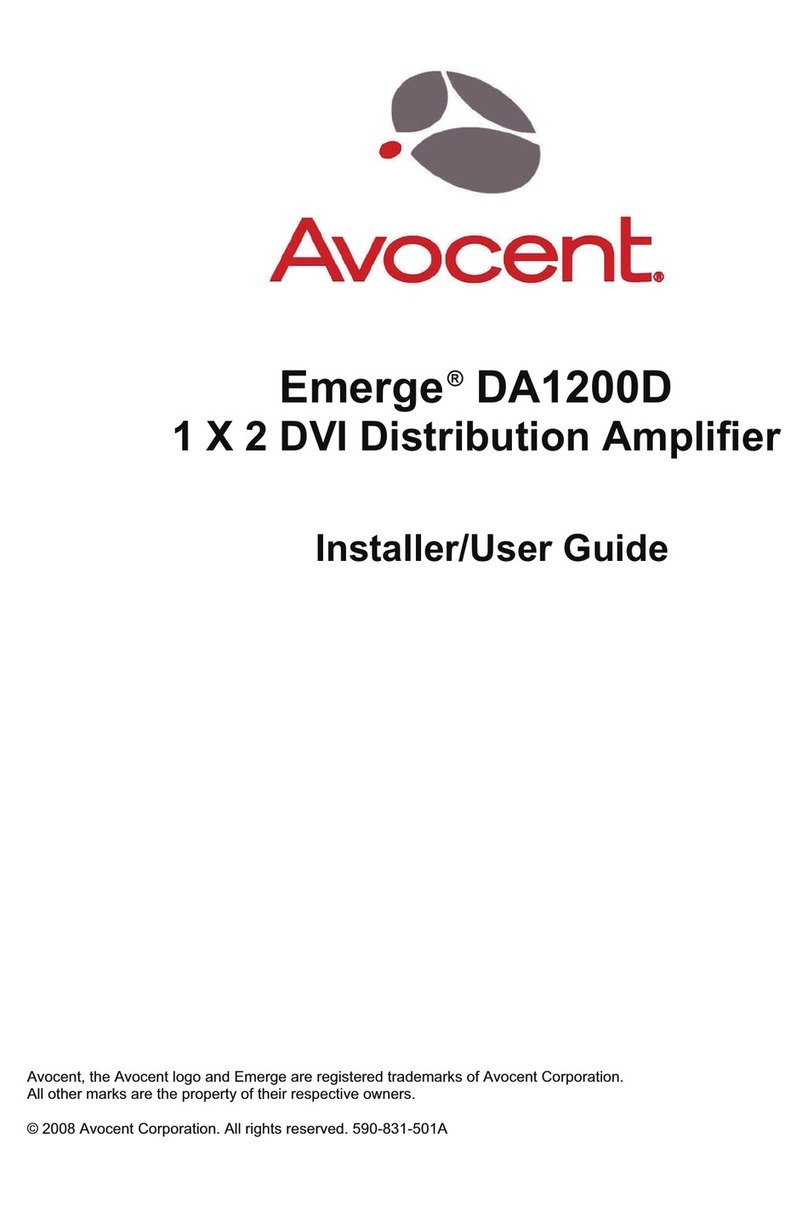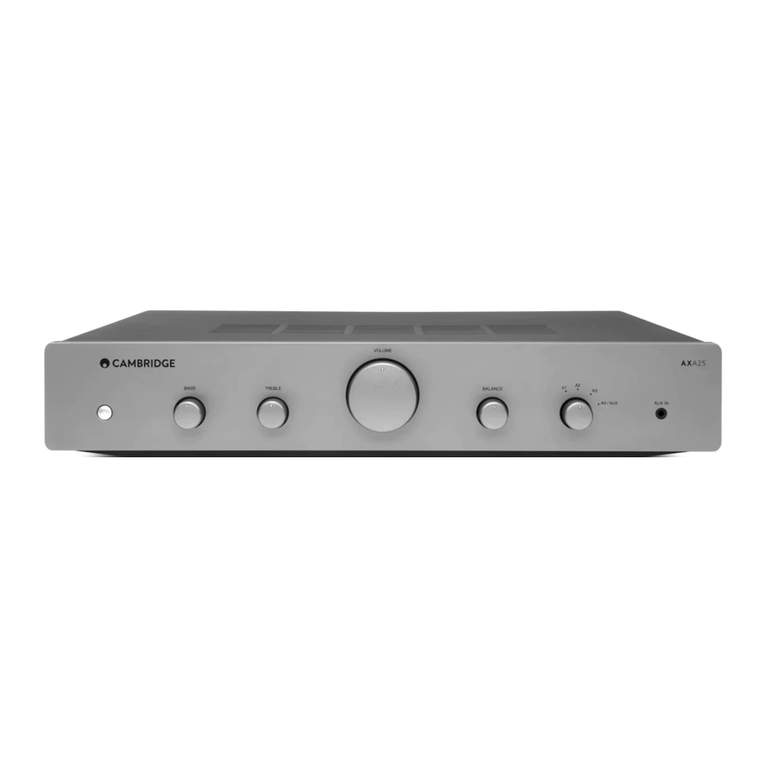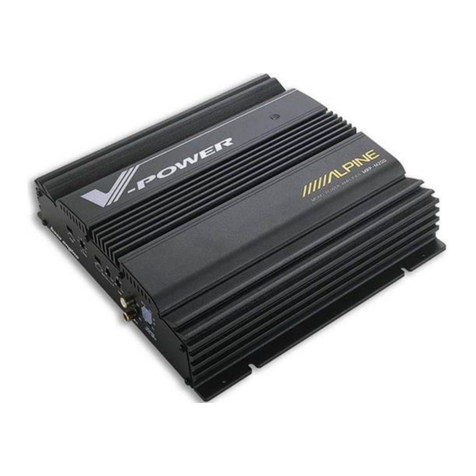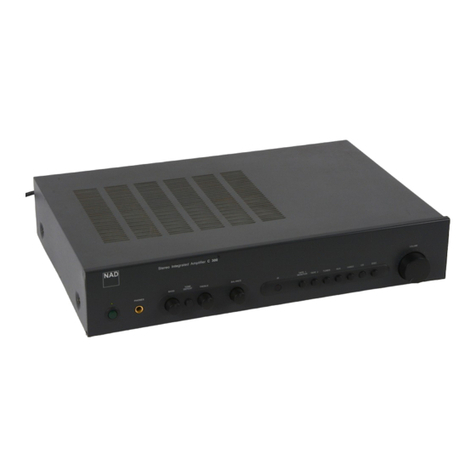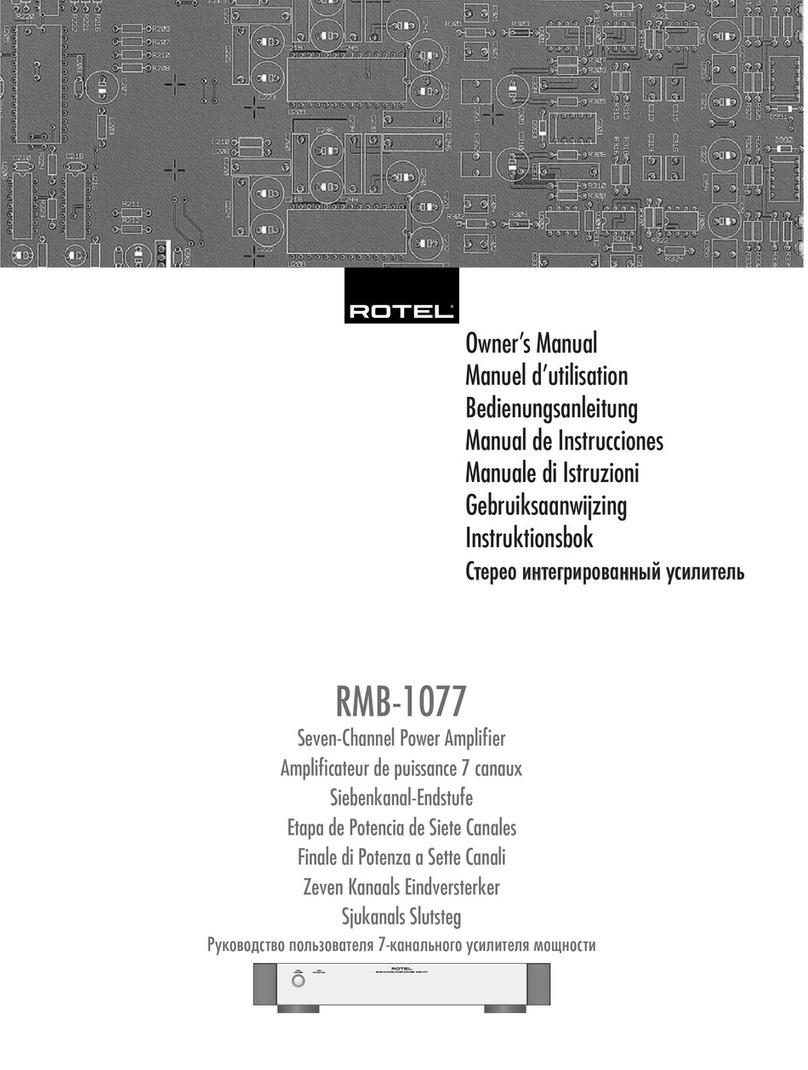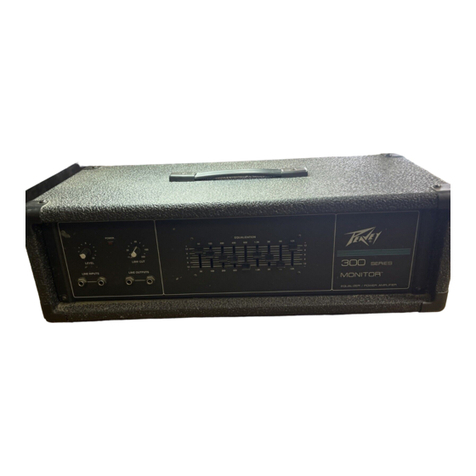A. IEC LINE CORD CONNECTOR - The line cord
must be connected to a grounded AC recepta-
cle in accordance with the voltage and frequen-
cy ratings as shown on the rear panel of the
amplifier ( {B}INPUT POWER ).
C. FOOTSWITCH - Plug-in connection for the
FOOTSWITCH (P/N 0055592000) for remote
switching of the Overdrive Mode, and both
DSP Effects circuits. NOTE: For proper opera-
tion of the FOOTSWITCH, the DRIVE SELECT
switch and both DSP Effects DEFEAT switches
on the front panel must all be OUT. (A speaker
grade cord is preferable to a coax guitar cord
for connecting the FOOTSWITCH.)
D. EFFECTS LOOP STEREO SEND - This jack
provides a line-level stereo output from the pre-
amp and both DSP Effects circuits of the
Princeton Chorus DSP. This output can be used
in conjunction with the {E}STEREO RETURN as
a patch point for external stereo effects devices.
(See “EFFECTS LOOPS - CONNECTION DIA-
GRAMS,” page 8) The EFFECTS LOOPS-
STEREO jacks are standard 1/4-inch
Tip-Ring-Sleeve types, with:
•Left channel signal on the Tip
•Right channel signal on the Ring
This send can also be used to feed a stereo sig-
nal to two channels of a recording or sound
reinforcement mixer. Additionally this output
can be used to drive another Princeton Chorus
DSP as a slave amplifier. This is done by con-
necting a shielded stereo cord from the
{D}STEREO SEND jack of the master ampli-
fier to the {E}STEREO RETURN jack of the
slave amplifier.
E. EFFECTS LOOP STEREO RETURN - This
stereo jack inputs signal directly to the left and
right power-amps. It automatically disconnects
the pre-amp and DSP Effects circuits when
used. This is useful when using the Stereo
Effects Loop option, or when using the
Princeton Chorus DSP as a slave amplifier for a
stereo signal source.
F. EFFECTS LOOP MONO SEND - This jack pro-
vides an impedance-balanced mono output sig-
nal from the pre-amp at a point before the DSP
Effects circuits. This output can be used in con-
junction with the {G}MONO RETURN as a
patch point for external mono effects devices.
(See “EFFECTS LOOPS - CONNECTION DIA-
GRAMS,” page 8) The {F}MONO SEND can
also be used to send recording and sound rein-
forcement mixers a dry signal. Additionally this
output can be used to drive another Princeton
Chorus DSP as a slave amplifier. This is done
by connecting a standard guitar cord from the
{F}MONO SEND jack of the master amplifier to
the {G}MONO RETURN jack of the slave amplifier.
G. EFFECT LOOP MONO RETURN - This bal-
anced jack inputs signal to the stereo DSP
Effects circuitry, which drives the stereo power-
amp section. It automatically disconnects the
pre-amp signal when used. This is useful when
using the Mono Effects Loop option or when
using the Princeton Chorus DSP as a slave
amplifier for a mono signal source. The DSP
Effects are active in the slave amplifier so that a
true stereo image will be generated if the DSP
Effects are used. NOTE: In order to function
properly, a dummy plug or an extra guitar cord
must be inserted into INPUT 2 on the front
panel of the slave amplifier with its VOLUME
controls turned down.
7
This equipment has been tested and found to comply with
the limits for a Class B digital device, pursuant to Part 15 of
the FCC rules. These limits are designed to provide a rea-
sonable protection against harmful interference in a residen-
tial installation. This equipment generates, uses and can
radiate radio frequency energy and if not installed and used
in accordance with the instructions, may cause harmful
interference to radio communications. However, there is no
guarantee that interference will not occur in a particular
installation. If this equipment does cause harmful interfer-
ence to radio or television reception, which can be deter-
mined by turning the equipment off and on, the user is
encouraged to try to correct the interference by one or more
of the following measures: •Reorient or relocate the receiv-
ing antenna •Increase the separation between the equip-
ment and receiver •Connect the equipment into an outlet on
a circuit different from that of the receiver •Consult the deal-
er or an experienced radio/TV technician for help
